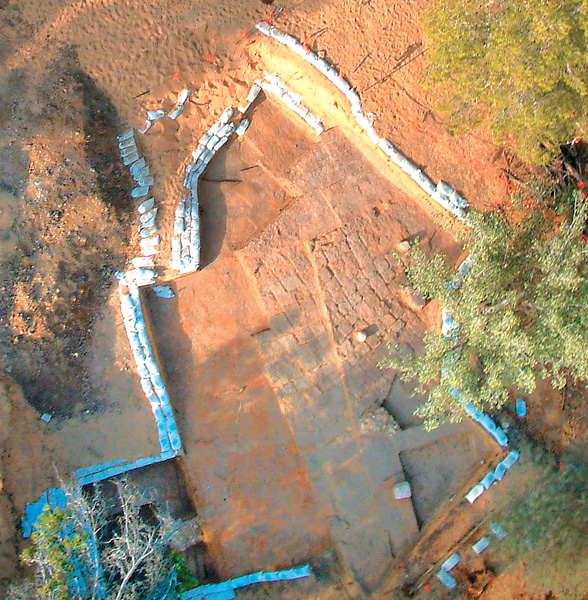Assyrian Palace, c. 712 BCE
In 2002, the Israel Antiquities Authority (IAA) uncovered what may be the administrative palace of the representative of Assyrian ruler King Sargon II (721–705 B.C.) in Ashdod. IAA archaeologists Elena Kogan-Zahavi and Pirhiya Nahshoni uncovered the palace when the IAA was called in after remains were found during work on the Ashdod light-rail project.
After excavating several areas, Kogan-Zahavi and Nahshoni found the palace and immediately identified it as Assyrian because of the distinctive way it was built, which was very different from local building practices. “The whole building was made from square mudbricks, which was typical for Mesopotamian construction,” Kogan-Zahavi said, whereas in nearby Tel Ashdod, the site of ancient Ashdod, “all the buildings are made from rectangular bricks.”
The archaeologists have no doubt the complex is a palace. According to Kogan-Zahavi, the new find has massive 10-foot-wide walls, and the entire structure, which she estimates originally measured 400 feet square, is built on a podium that dramatically elevated it about 6 feet above the surrounding landscape. Kogan-Zahavi observed that these features are typical of Assyrian public buildings. “It was an immense structure; they wanted everyone to see it,” she said. “The podium is built from red brick. It is very beautiful; very impressive.” Dating the palaces was also easy. As Kogan-Zahavi explained, “We know that in 712 B.C. Ashdod revolted and that Sargon sent in an army to quell the rebellion and destroyed Ashdod, installing his own governor for the city, so we know the exact period the palace was built.”
Strata- Assyrians in Ashdod, Judith Sudilovsky, BAR 30-06, Nov-Dec 2004.




